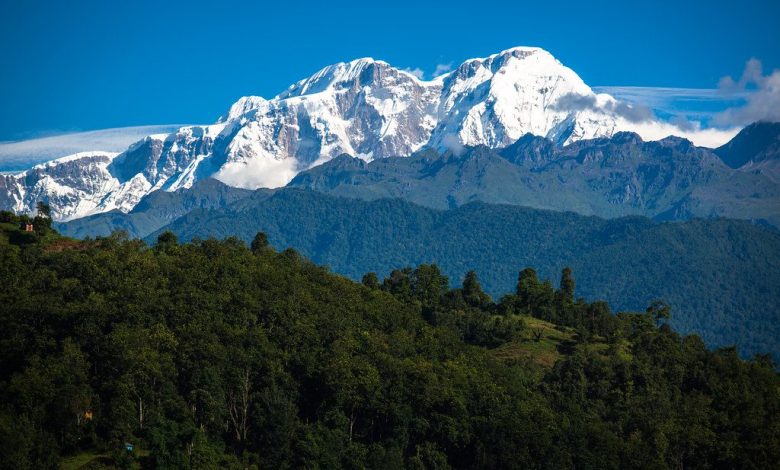Humboldt’s Enigma and its Significance for India
[GS Paper 1 - World Geography and its Salient Features]

Context – The question of where biodiversity is concentrated has intrigued explorers and naturalists for centuries. Humboldt has tried to answer this question. Alexander von Humboldt, the 19th-century polymath and explorer, left an indelible mark on the scientific world with his groundbreaking expeditions and holistic approach to understanding nature.
Humboldt’s legacy transcends time and borders, influencing disciplines ranging from geology and ecology to sociology and philosophy. His insights into the interconnectedness of the natural world, known as Humboldtian science, continue to resonate profoundly in contemporary discourse. This editorial aims to delve into Humboldt’s enigma and explore its implications for India, a country rich in biodiversity and cultural heritage.
Humboldt’s Enigma Unveiled
- Humboldt’s scientific pursuits were guided by his belief in the unity of nature, where every aspect of the environment is interconnected. His expeditions across Latin America, especially his exploration of the Amazon rainforest, provided him with unparalleled insights into the complexity of ecosystems and the delicate balance of life forms.
- Humboldt’s enigma lies in his ability to synthesize diverse observations into a holistic understanding of nature, predating many modern ecological concepts.
- Tropical areas receive more solar energy, fostering greater primary productivity and biodiversity due to the availability of ecological niches.
- Mountains, despite being outside the tropics, have been an exception to the rule, posing Humboldt’s enigma.
Implications for India:
India, with its diverse ecosystems ranging from the Himalayas to the Western Ghats and the Sundarbans, stands to gain immensely from embracing Humboldt’s principles. The following points elucidate the implications of Humboldt’s enigma for India:
- Biodiversity Conservation: Humboldt recognized the intrinsic value of biodiversity long before it became a focal point of environmental conservation efforts. India, home to numerous endemic species and ecosystems of global significance, can draw inspiration from Humboldt’s emphasis on the interconnectedness of species and habitats. By adopting integrated conservation strategies, India can safeguard its rich biological heritage for future generations.
- Climate Change Mitigation: Humboldt’s observations on climate gradients and their influence on vegetation laid the groundwork for understanding climate change impacts. In the context of India, where climate change poses significant challenges to agriculture, water resources, and vulnerable communities, Humboldt’s holistic approach can inform adaptation and mitigation measures. Embracing sustainable practices and promoting ecosystem resilience are imperative in addressing the adverse effects of climate change.
- Cultural and Scientific Exploration: Humboldt’s expeditions were not merely scientific endeavors but also cultural odysseys that fostered cross-cultural exchange and understanding. India’s cultural diversity and heritage offer a wealth of opportunities for interdisciplinary exploration, where scientific inquiry intersects with traditional knowledge systems. By promoting collaborative research
- initiatives and fostering dialogue between scientists, indigenous communities, and policymakers, India can harness Humboldt’s spirit of exploration to unravel the mysteries of its natural and cultural landscapes.
- Education and Public Awareness: Humboldt’s legacy extends beyond academia, encompassing public engagement and environmental advocacy. India, with its burgeoning population and diverse socio-economic landscape, faces challenges in raising environmental awareness and fostering a sense of ecological stewardship. By incorporating Humboldt’s principles into educational curricula and public outreach programs, India can instill a deeper appreciation for nature and inspire collective action towards sustainable development.
Eastern Himalaya: An Anomaly
- Diversity Beyond Tropics: Eastern Himalaya boasts exceptional diversity, challenging the conventional tropical biodiversity paradigm.
- Multiple Factors: Climate dissimilarity and geological heterogeneity contribute to high biodiversity.
- Climate Variability: Different temperature and rainfall levels on the same mountain support diverse biomes.
Unresolved Questions
- Complexity of Biodiversity: Numerous factors drive diversification and Humboldt’s enigma in different regions, leading to over a hundred hypotheses.
- Data Limitations: Fine-scale species occurrence data are lacking, hindering precise explanations.
- Call for Research: India’s under-studied areas need more extensive research, including the use of genetics, to understand true biodiversity.
- National Initiatives: Programs like the National Mission on Himalayan Studies and Biodiversity need strengthening to support basic research.
Conclusion
Humboldt’s enigma serves as a timeless beacon of enlightenment, guiding humanity towards a harmonious relationship with the natural world. As India navigates the complex challenges of the 21st century, Humboldt’s principles offer a compass for sustainable development and inclusive progress. By embracing the spirit of inquiry, empathy, and interconnectedness embodied by Humboldt, India can chart a course towards a more resilient and equitable future for generations to come.
SOURCE: The Indian Express





.png)



